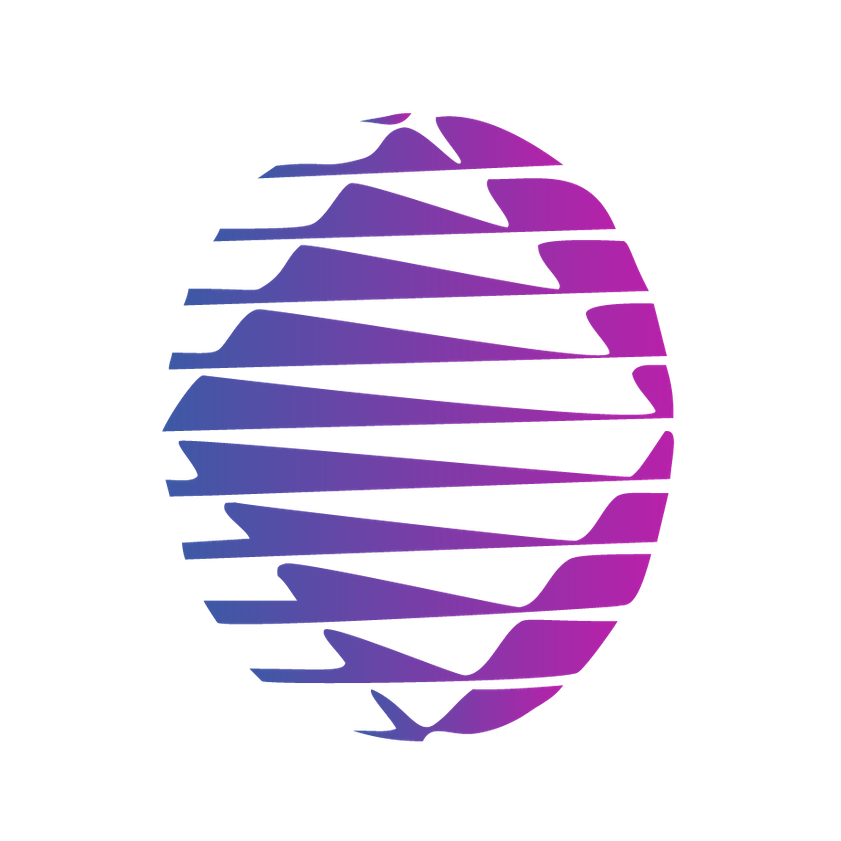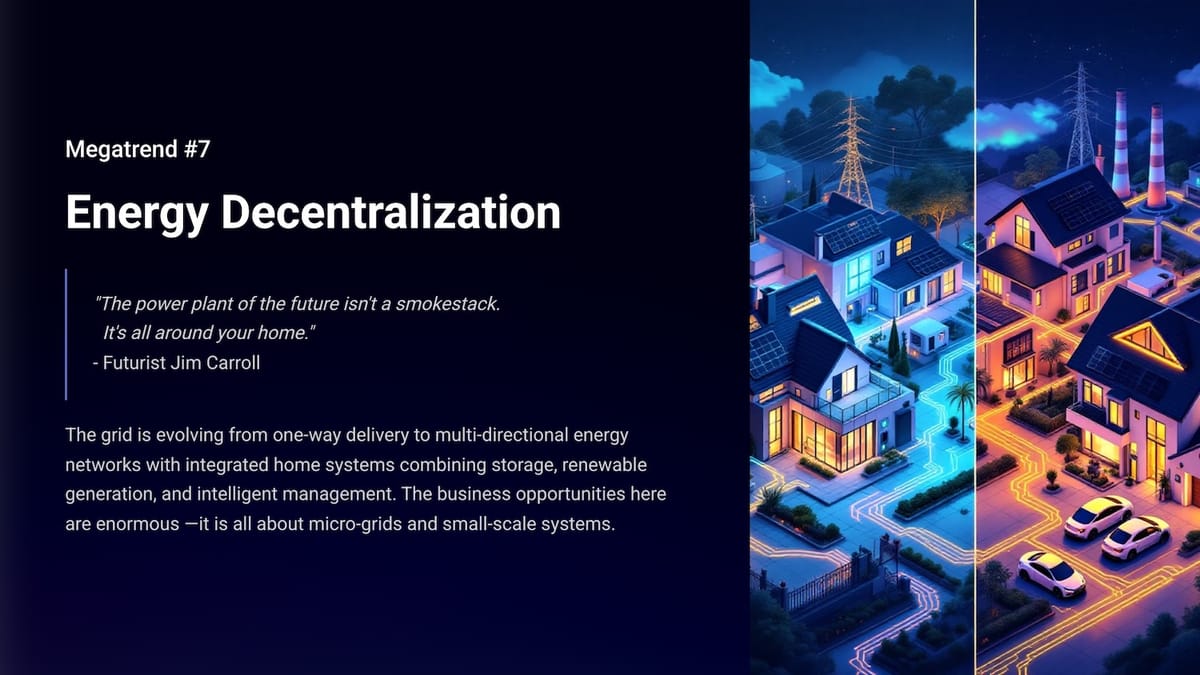"The power plant of the future isn't a smokestack. It's all around your home." - Futurist Jim Carroll
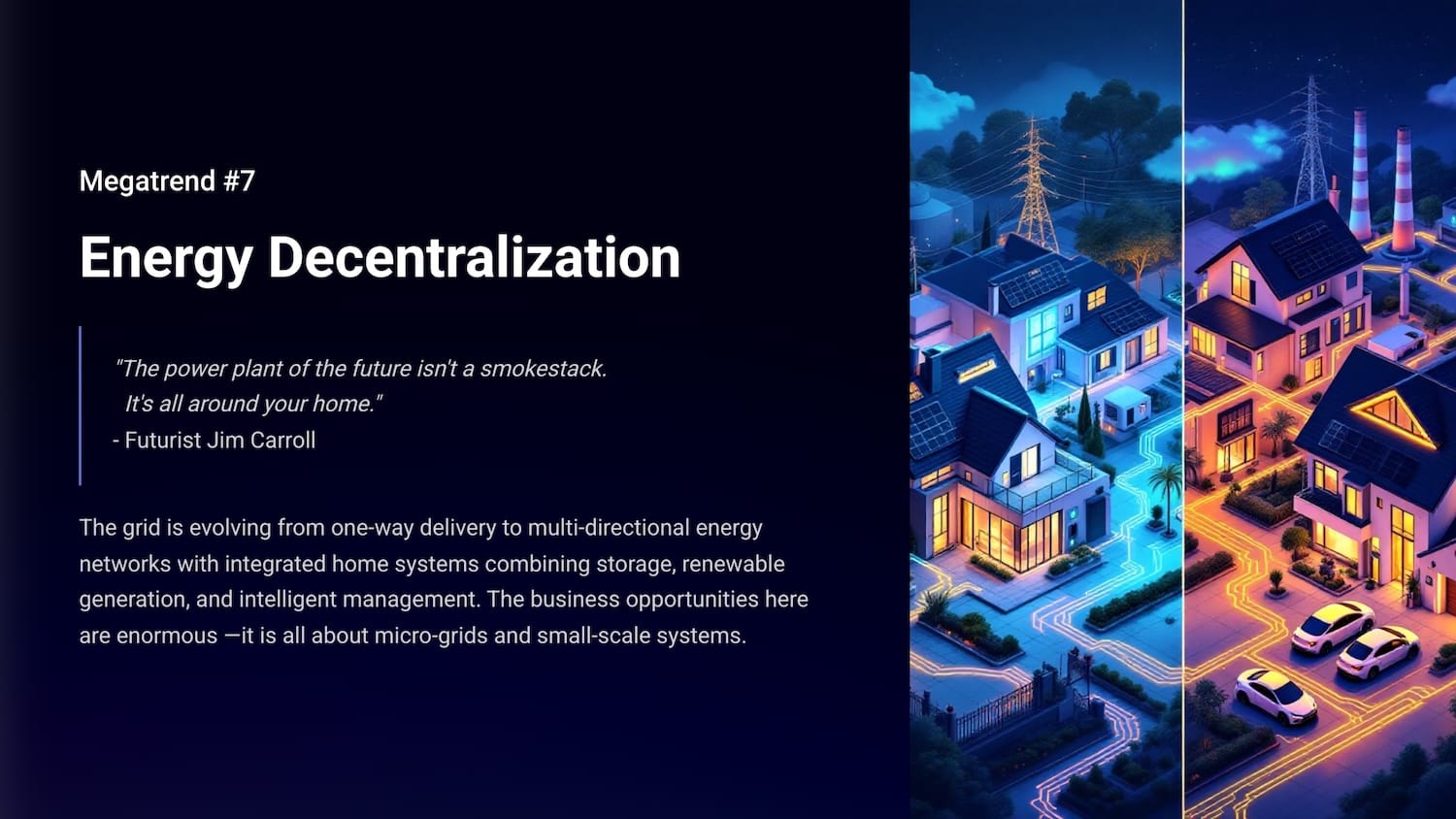
The global energy grid is in the midst of its most profound transformation in a century.
For decades, our model has been simple: massive, centralized power stations push electricity in one direction to passive consumers. That era is decisively ending. We are witnessing a fundamental shift from a one-way delivery monologue to a multi-directional energy grid. The power plant of the future is no longer a distant smokestack; it's the solar panels on your roof, the battery in your garage, and the smart devices throughout your home.
I must admit, it's kind of bizarre writing about this right now because the trend is real, and yet one nation is busy turning its back on the reality of the trend (and many other things.)
So let's consider this from a global perspective!
This evolution toward intelligent, multi-directional networks represents a critical inflection point over the next five years. It’s a transition creating enormous business opportunities that extend far beyond simple hardware to encompass sophisticated, data-driven services. Here's a PDF that explores it.
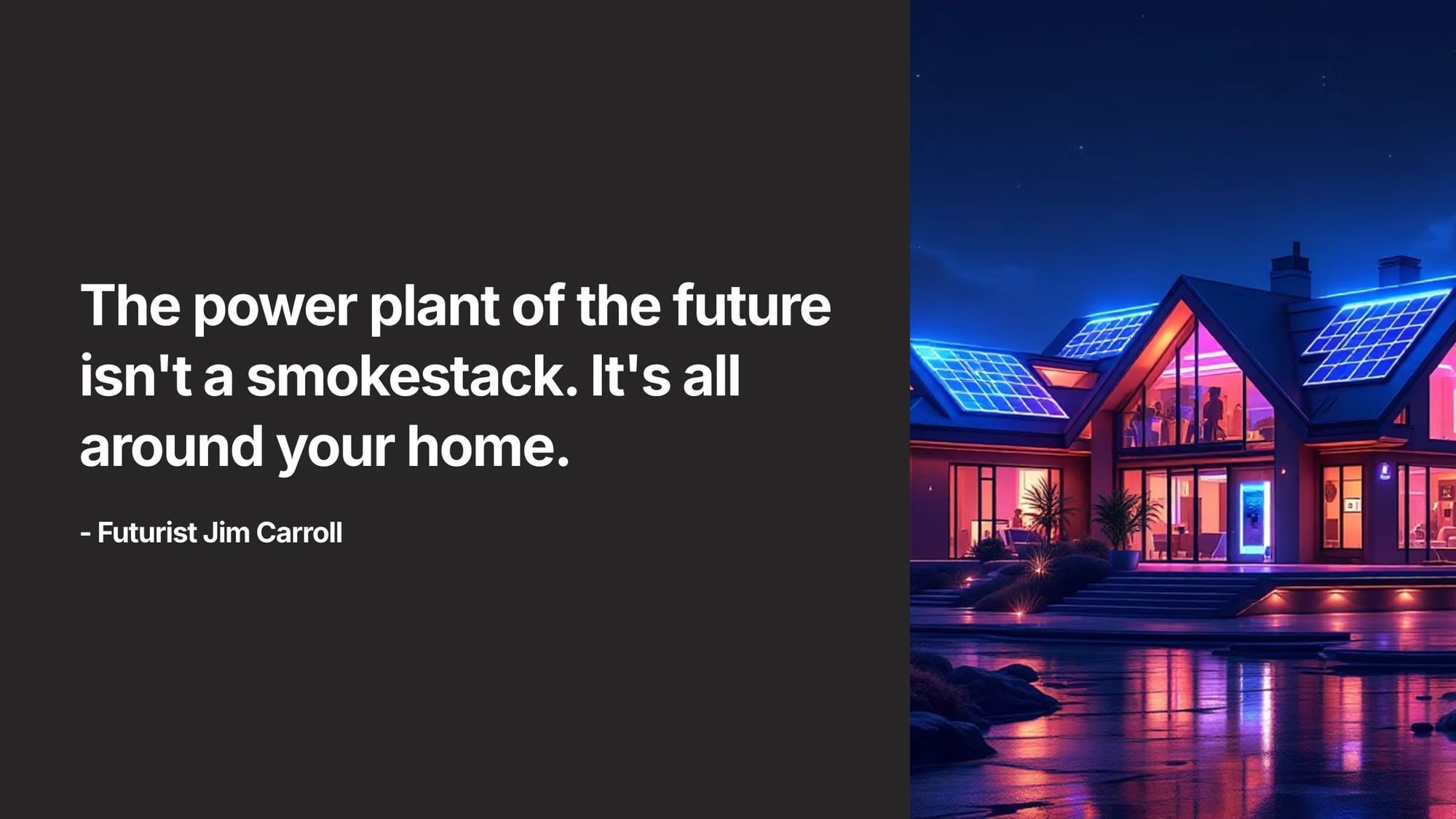
Essentially, it's being a centralized grid, to a decentralized, distributed grid, with millions of energy inputs.
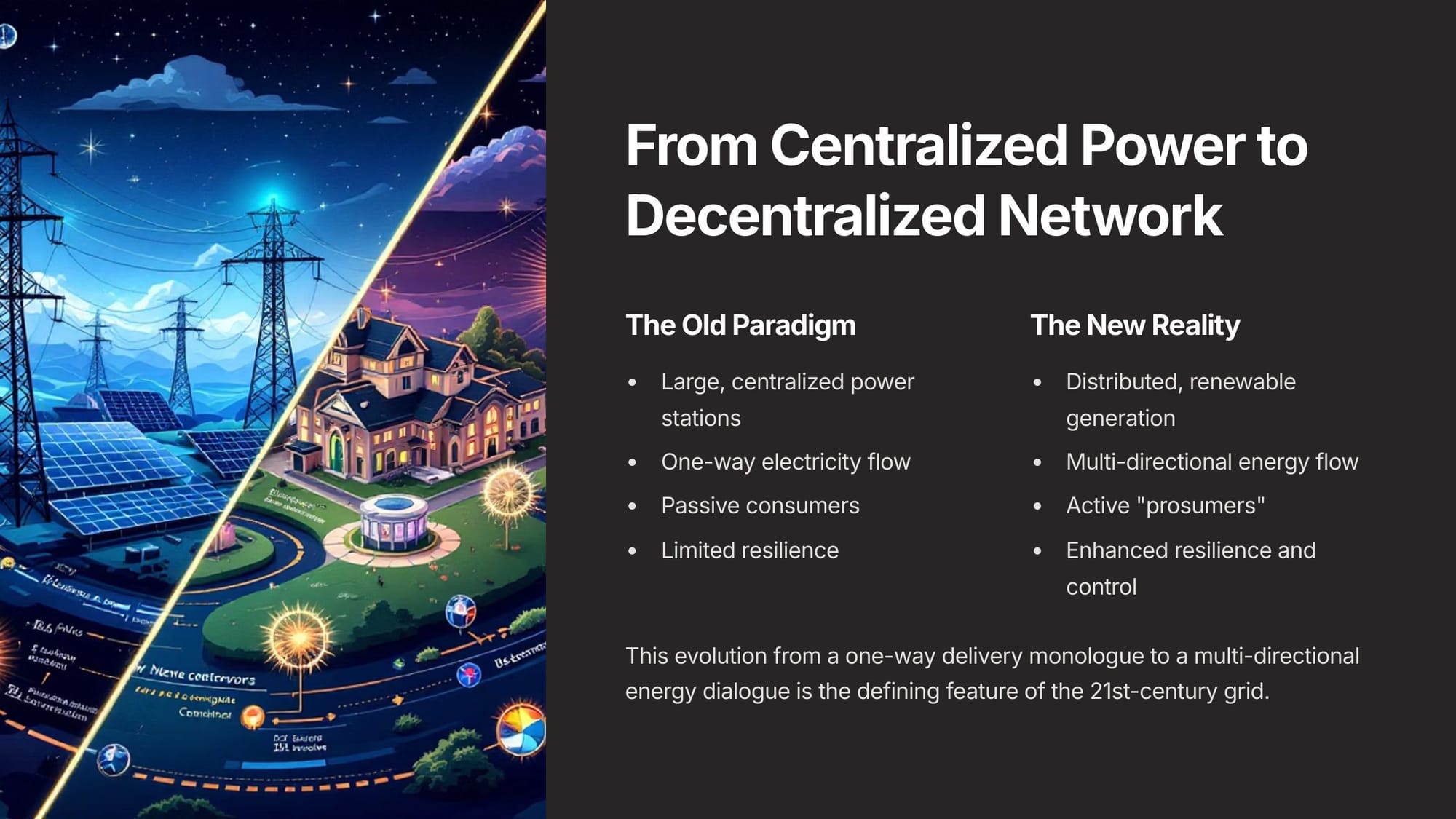
So what's it all about? Continuing on the energy theme from yesterday, this transformation isn't happening by accident. It's being propelled by three powerful, interconnected forces I call the "Three Ds":
- Decarbonization: Despite some areas with political pushback, the world is aggressively shifting from fossil fuels to renewables.
- Decentralization: Energy is now being generated, stored, and managed closer to where it's consumed. This gives rise to the "prosumer"—an active participant who both produces and consumes energy.
- Digitalization: We're embedding intelligence into the network. Smart meters, IoT sensors, and advanced software are creating a responsive, "aware" grid where electricity and data flow in both directions.
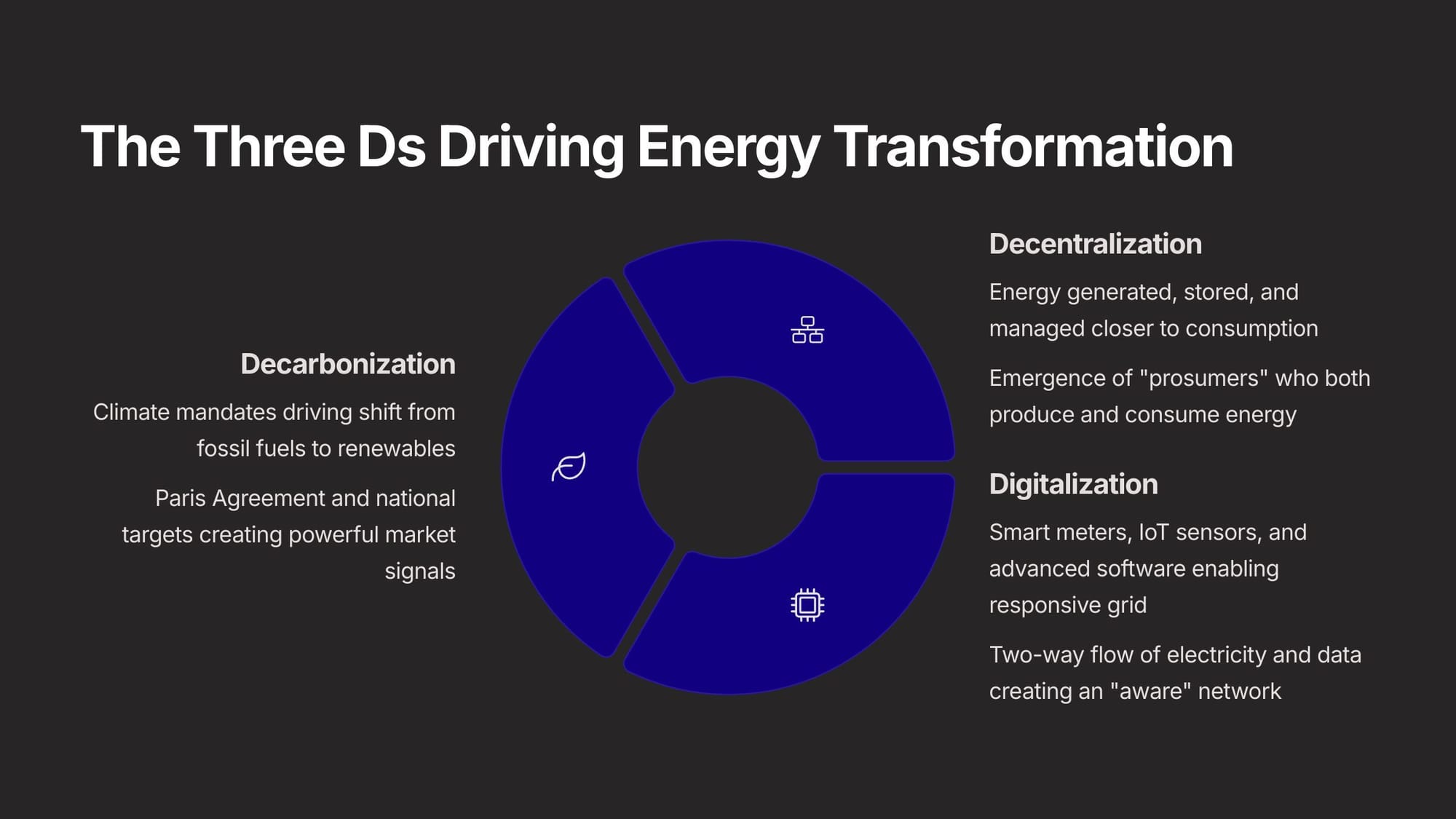
The shift is pretty profound. In the old paradigm, you were a passive consumer with little control. Energy got sent to you. The new reality empowers you as a "prosumer." in which you contribute your energy when available. The integrated home energy system is the engine of this new model. It consists of:
- Solar Photovoltaics (PV): High-efficiency panels on your rooftop become your power generator.
- Battery Storage: This is the game-changer. It allows you to store excess solar power for use at night, provides critical backup during outages, and lets you optimize your energy use for economic benefit.
- Energy Management Software: The brain of the system, this software orchestrates the flow of energy to maximize your savings and convenience.
Think of it this way - various groups right now are building smart home thermostats that manage your batteries and power generation - and become the next billion-dollar industry by doing so. Not only that, but the financial incentive for this shift is becoming undeniable. The "spread" between the cost of self-generated power and buying from the grid is set to widen dramatically over the next five years, creating a powerful motivation for mass-market adoption.
What's behind it all? What is this new architecture of power? Microgrids and virtual power plants.
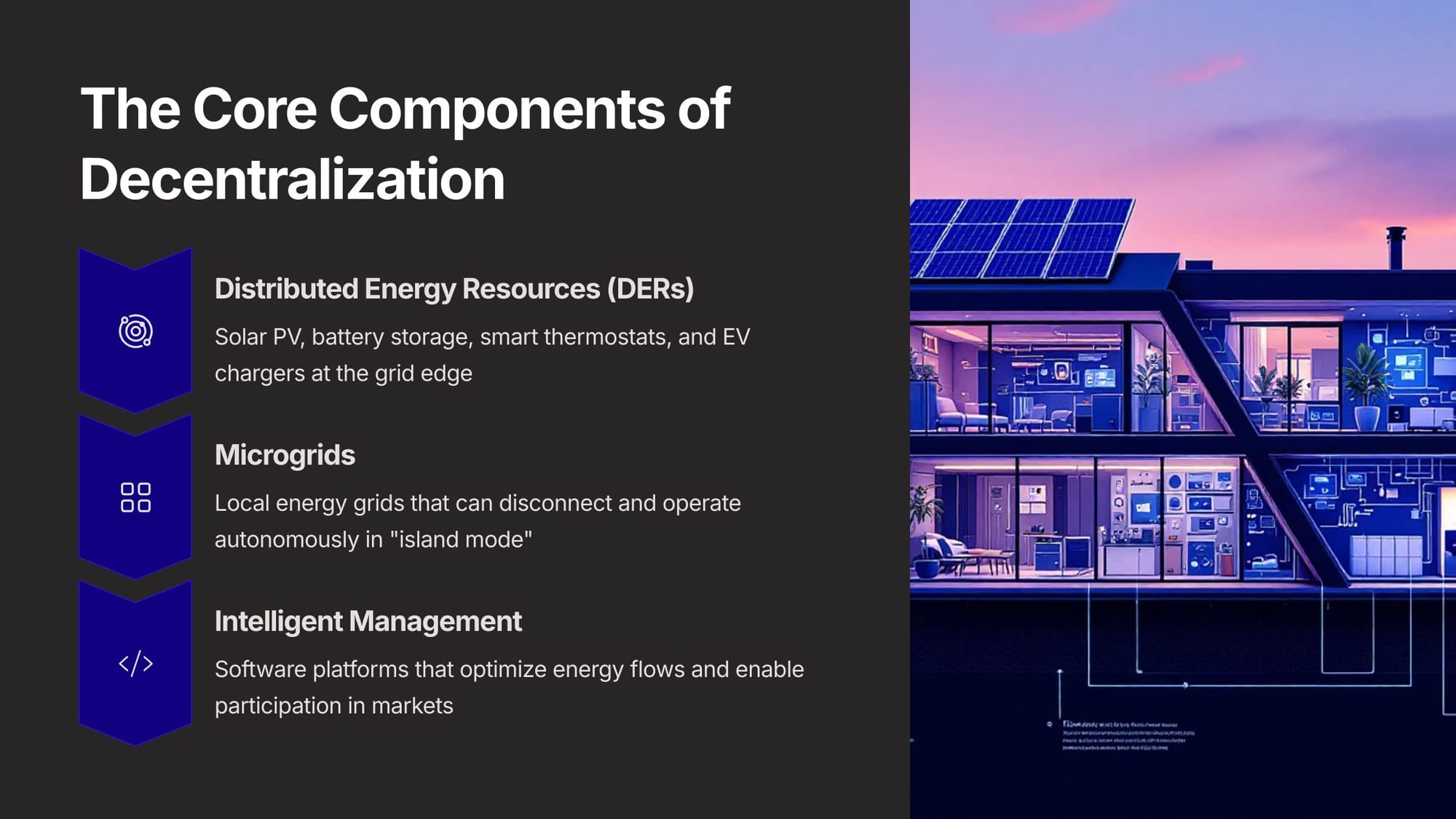
Microgrids are self-contained, local energy systems that serve a specific area, like a neighborhood or a commercial district. They combine resources like distributed rooftop solar, shared community batteries, and controllable loads. Their key advantage is resilience; they can disconnect from the main utility and operate autonomously in "island mode," keeping the power on during widespread outages.
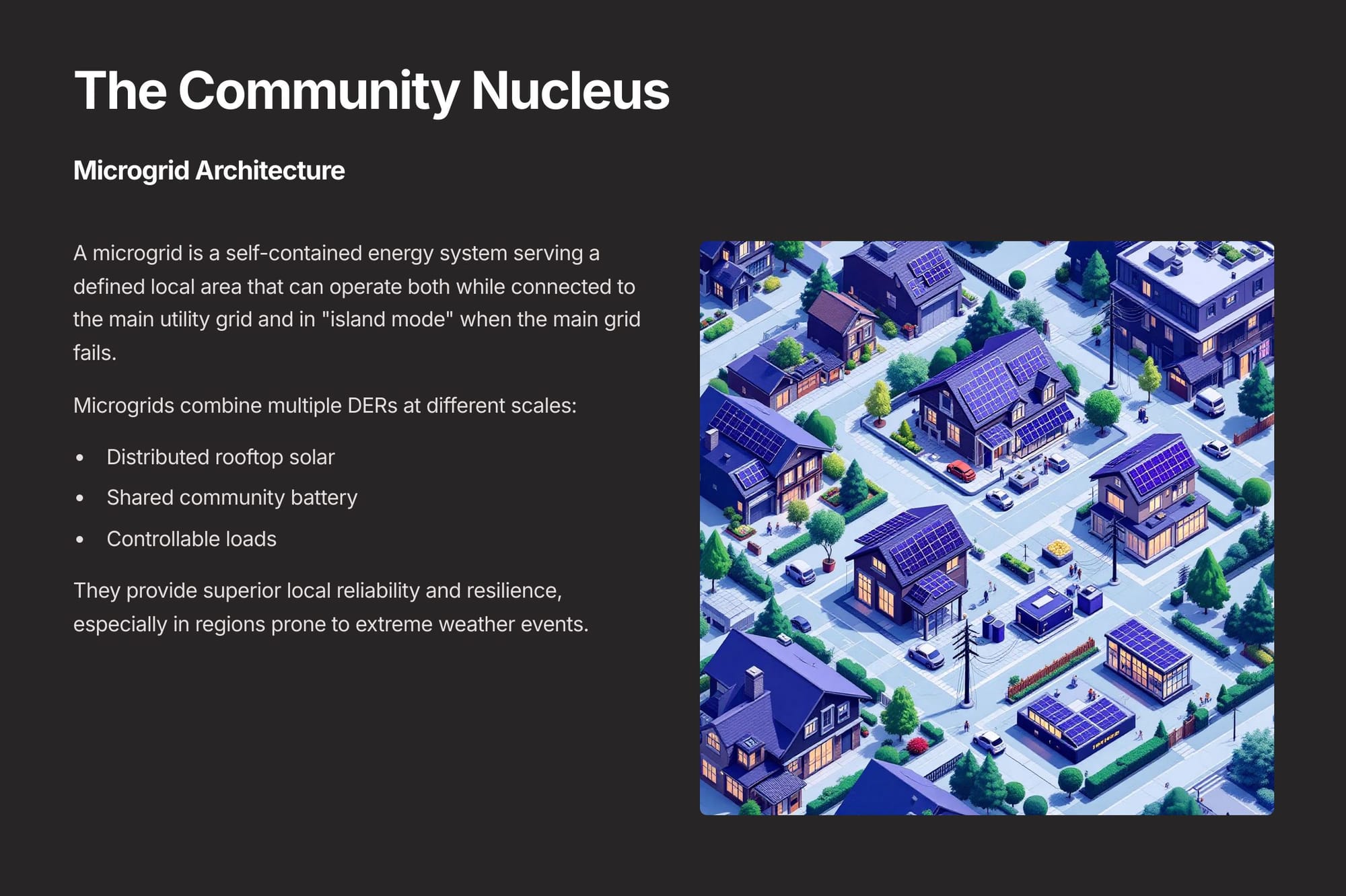
Virtual Power Plants (VPPs) are the digital overlay on top of this physical infrastructure. A VPP is a cloud-based platform that aggregates thousands of individual distributed energy resources (DERs)—like home batteries and EV chargers—and orchestrates them to act as a single, large-scale power plant. This creates new revenue streams for DER owners while providing essential stability services back to the grid.
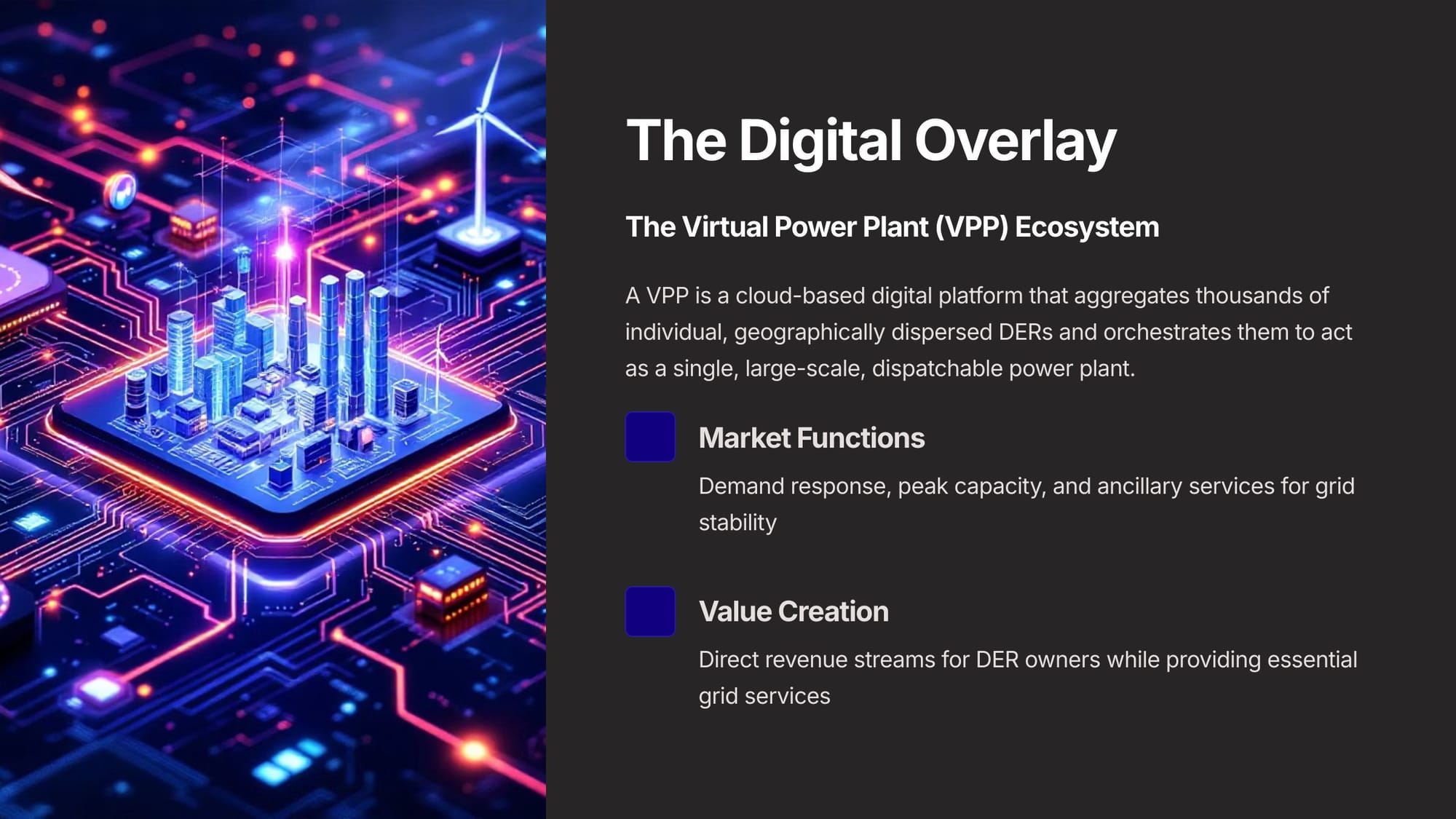
The next five years will be a period of radical change with a clear progression:
- 2025-2026: The Acceleration Phase. A wave of investment will be driven by major policy initiatives like the U.S. Inflation Reduction Act. Regulators will focus on streamlining grid connections, and third-party ownership models like solar leases will see rapid growth.
- 2027-2028: The Scaling Phase. Battery costs will hit a tipping point, making them a mainstream purchase. The customer base will shift from tech-savvy "early adopters" to the more pragmatic "early majority," who are motivated by practical benefits like cost savings and reliability.
- 2029: The Integration Phase. DERs will be fully incorporated into official grid planning. The utility model of a "Distribution System Operator" (DSO), acting as a neutral market facilitator, will be proven in pioneering regions. As the grid becomes more complex and interconnected, cybersecurity will emerge as a major new market and a critical concern.
While the path is clear, it's not without challenges. We face headwinds from regulatory inertia, high upfront costs that limit equitable access, and a shortage of skilled technical workers, not to mention political pushback. The International Energy Agency (IEA) has rightly warned that our existing grid infrastructure risks becoming the "weak link" in the energy transition, with investment in modernization lagging far behind renewables.
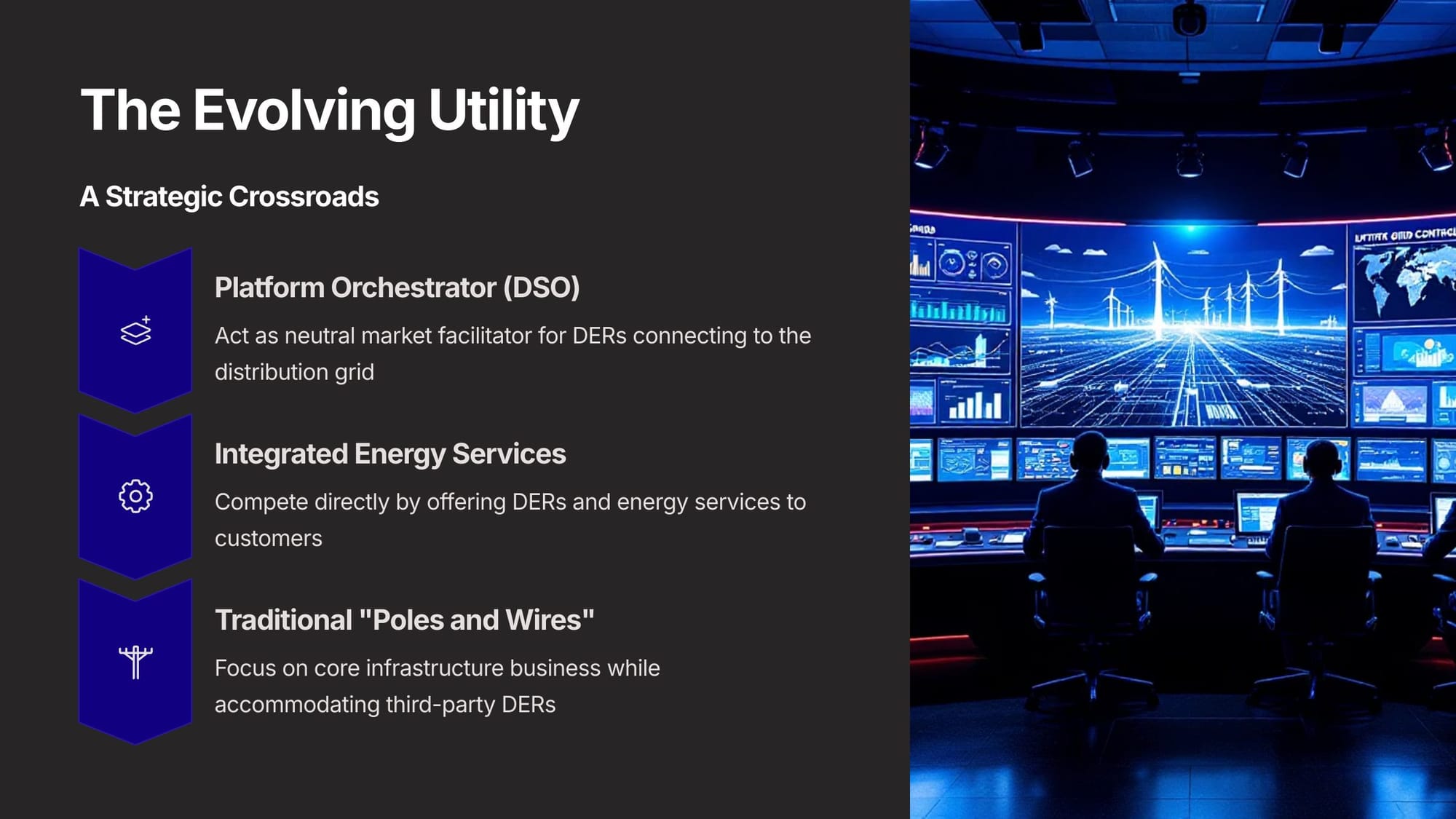
This is a strategic crossroads for all stakeholders—investors, entrepreneurs, incumbent utilities, and policymakers.
For utilities, the "wait and see" approach is no longer tenable. They must choose whether to compete directly by offering these new services or to evolve into a platform orchestrator that facilitates this new market. For entrepreneurs, the biggest opportunities lie in building "simplification-as-a-service" platforms that remove complexity for the consumer.
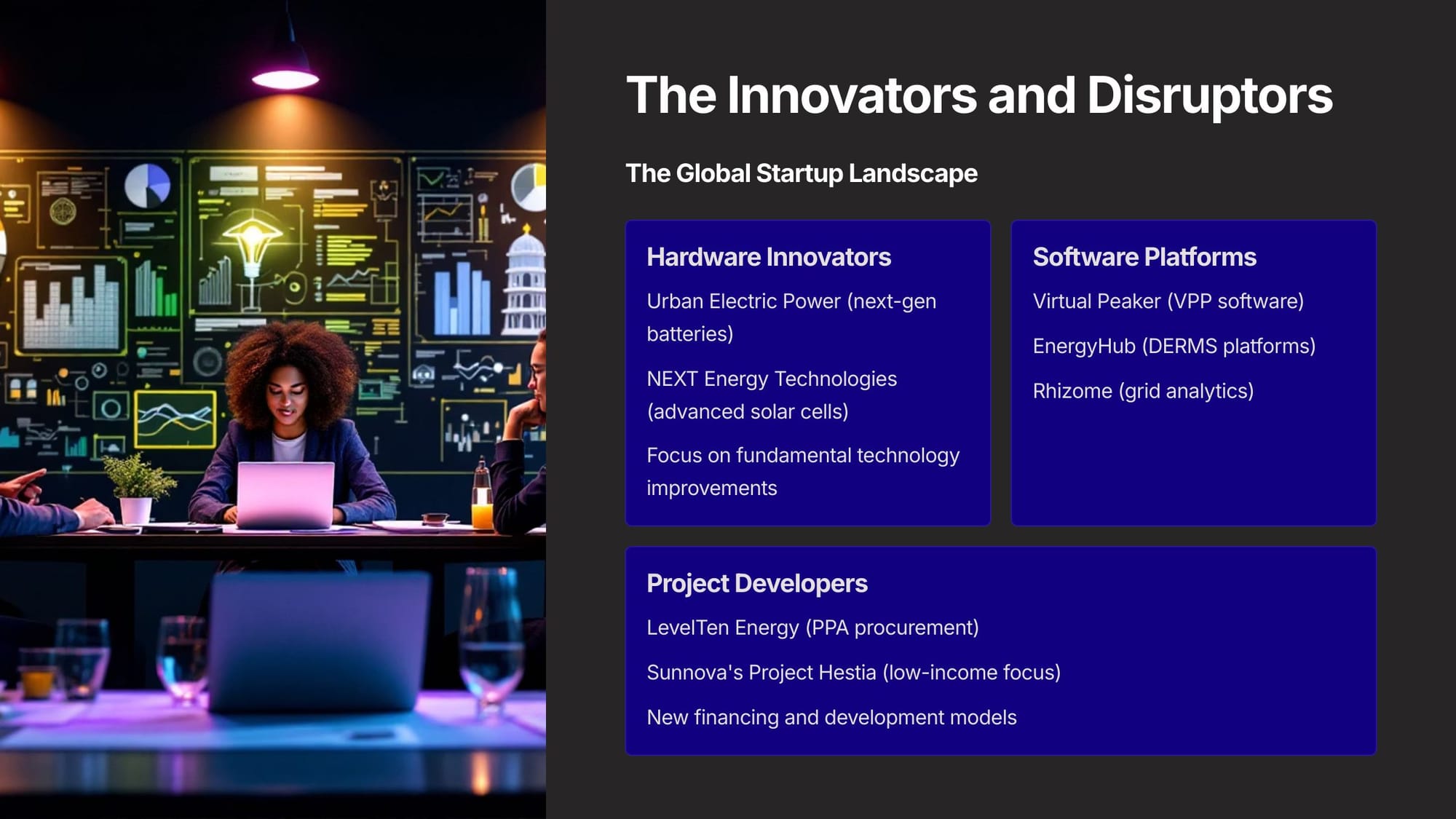
For you, the homeowner, the opportunity to get involved through your personal energy generation has never been more real - because globally, the future of energy is distributed, intelligent, and democratic. It’s a future being built today in our homes, businesses, and communities.
Futurist Jim Carroll has solar panels on his roof that generate a significant amount of power. It is not yet fed back into the grid but mostly offsets the cost of charging his EV.
